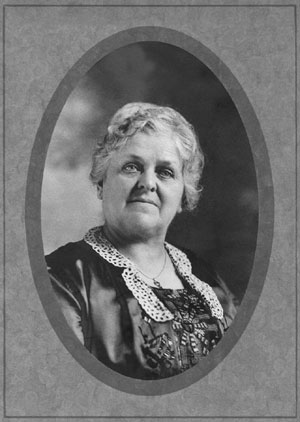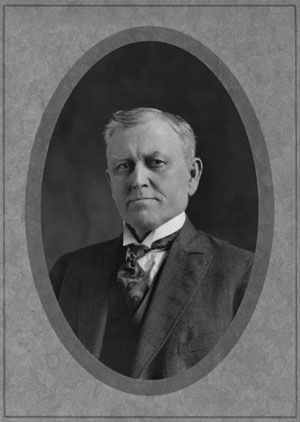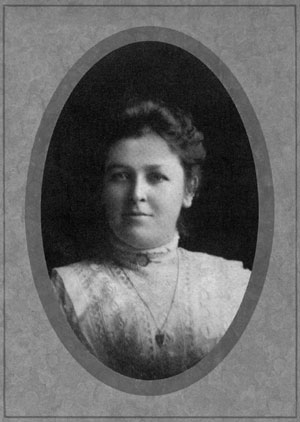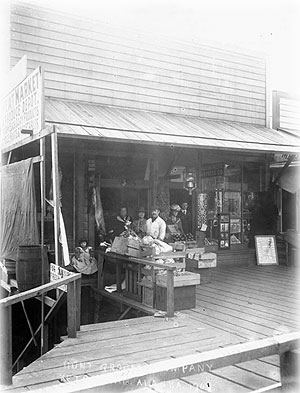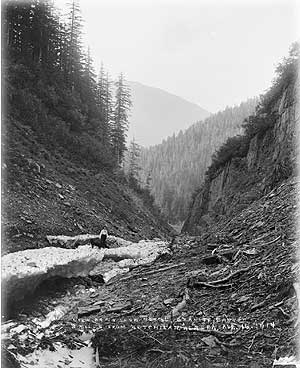 By DAVE KIFFER March 22, 2008
Many of those familiar photos of Ketchikan's early years are now on display at the Ketchikan museum through mid April. Harriet (Frost) Hunt and her daughter, Bertha Hunt Wells were two of the first female photographers in the Territory. The Hunt family history was one of moving west in order to make a better life. Several economic slumps hit the country in the years following the Civil War and that led the Frosts and the Hunts to head west as well. The Frost family had come out West by wagon train in the 1844, surviving robberies and Indian attacks to make it to the Oregon Territory and become one of the first families to inhabit what eventually became Washington state. Harriet Elizabeth Frost was born in Tumwater, Washington on January 2, 1865. The Hunt family was originally from New York, but was living in Michigan at the time of Forest's birth in 1858. After Forest's father served in the Civil War, the family moved to Nebraska, where Forest Hunt graduated from school. He and his father Miles Hunt - then headed to Puget Sound where they heard jobs were plentiful. First, they tried logging in the Gig Harbor area. Then Forest got a job teaching school. In her family journal, Bertha Hunt Wells noted that it was common in those days for teachers to "board" with local families. "Dad soon found the home where he much preferred boarding (the Frost Home), as mother was a pretty, vivacious girl, with light brown hair, blue eyes and a baby complexion and his favorite pupil," Hunt Wells wrote in 1965. "Dad laughingly told me that the mother of some of his other girl pupils talked about him saying that he had been seen kissing her. Being a hot headed young man, not yet 22 years old, (he) went up to their farm and (accused) her of slander. Her husband came in and asked what the trouble was and when Dad told him, the man looked at his wife and said 'old woman, you keep your mouth shut.' That settled it." Wells also wrote that from her father's expression it was clear that the 'old woman's' gossip had at least a grain of truth to it. Lizzie Frost and Forest Hunt were married on March 31, 1880 at her home. Forest was 22, Lizzie was 15. Shortly after, he quit teaching and opened a store. The Hunts had five children; Elmer, Dale, Bertha, Elaine and Amy. Elmer died at age 9 in Washington and the 1890s proved hard for Forest's business efforts. A depression hit the country and his store was failing, primarily because the local banks were in trouble. When news arrived of gold strikes in Alaska, he decided to go north to Wrangell. He arrived there in 1898 and sent for his family. Harriet immediately took over the operation of a small café, the Blue Front. She was very popular for her lemon pies, according to a 1932 article about her in Juneau's "The Stroller Weekly." In the fall of 1899, Harriet and the children went back to Tacoma for the winter. It was then that Forest decided to relocate to the village of Ketchikan which was showing an increase in mining activity. The "boom" in mining on the Stikine River had ebbed, primarily because the Canadian government was blocking efforts to build a railway up the Stikine River valley. Hunt moved to Ketchikan in March, 1900 and his family joined him in June. The Hunts immediately opened a small store and became active in community affairs. Harriet founded the lyceum club which became the library board and would serve on it for the rest of her life. She would also found the women's Chamber of Commerce and be active in local lodges and other groups. Forest was elected to the city council and would eventually serve as mayor and then be elected to the Territorial Legislature. He was president of the Senate for one term. In the mid 1920s, he would make headlines by calling Ketchikan "vice ridden" and "wicked" as he urged the federal government to help "clean up" the First City. During her time in Wrangell, Harriet Hunt had taken an interest in photography. Originally, she purchased a camera from Fred Carlyon to give to her daughter Bertha. But Harriet also discovered she enjoyed taking pictures as well. When the family was settled in Ketchikan, Harriet Hunt opened a photo studio and gallery in the family store. The Hunt store was one of the first to recognize the need to serve the visitor trade as well, making postcards and even putting Harriet's photos on china souvenirs. She took hundreds of photos over the next few years, but then gave up photography over concerns about working with the chemicals and the physical exertion of lugging the big camera back and photographic plates back and forth, according to Bertha Hunt Wells. Harriet Hunt would work in the family store and also operate a book store for the rest of her life. One Hunt store was located on the water side of Front Street, across from the Ingersoll Building. The family lived in the upper floors of that building. A second store was also on the water side of Front Street just up the block. Ketchikan resident Jane Church was 14 when her grandmother Harriet died in 1934. She told the Ketchikan Daily News in 1989 that her grandmother was a very friendly person. "She'd meet the boat coming in, you know we didn't have airplanes then, and she'd greet everyone who came off," Church told the Daily News. "Soon, she'd know everything about them. She was very outgoing." Church also said that her grandmother's love of reading left an impression on her. "She read a lot and was self educated," Church told the Daily News in 1989. In fact her housekeeping suffered. "If she was reading she just forgot about the house!"  When Forest Hunt first saw Ketchikan, on his way to Wrangell in early 1898, it was probably about like this. Two years later, when he arrived to set up his meat market, there had already been major changes. Photographer unknown Donor: Forest J. Hunt, THS Photograph courtesy Ketchikan Museums  Detail from a Hunt photo Donor: Forest J. Hunt, THS Photograph courtesy Ketchikan Museums 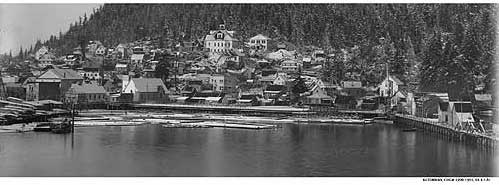 Detail from a Harriet Hunt photo Donor: Forest J. Hunt, THS Photograph courtesy Ketchikan Museums
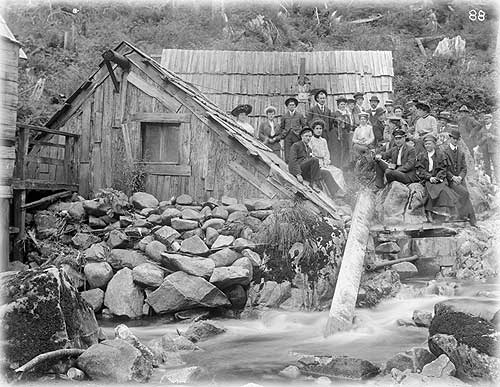 Hunt photo Donor: Forest J. Hunt, THS Photograph courtesy Ketchikan Museums
As Heney stepped outside his
office, he saw Robinson standing in front of the Heckman Building
on Dock Street. When Robinson raised his gun, Heney fired and
killed him.
Note on the Exhibit Photos:
On the Web:
Dave Kiffer is a freelance writer living in Ketchikan, Alaska. To republish this article, the author requires a publication fee. Contact Dave at dave@sitnews.us
|
|||
